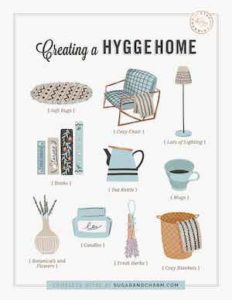If this were a perfect world, I’d be dead!
Whoa!
It’s not that I think it would be perfect if I were dead. It’s just that I would not be able to live in a perfect world.
I don’t think anybody would. Perfection is highly overrated. This is true whether you’re learning French recipes or you’re learning Spanish grammar.
A Perfect World of Language?
At this stage of the game, (I actually prefer the Spanish expression – “A estas alturas” – at these heights), I don’t want to waste time on being perfect. At these heights I know I need balance. At these heights you need more balance than ever. It’s easier to tip over.
For me, a balanced life embraces imperfection. I’m not talking disaster here, or lackadaisical work ethic or inferior products. Many cultures include an imperfect detail in a product (Middle Eastern carpets and Japanese pottery for example), because only the supreme being is perfect (and I think s/he might have something to say about that, too).
Sometimes the perfect costs too much in time and effort to be worth it. And what does it matter in the grand scheme of things? What does matter?
Imperfect Worlds in Danish and Japanese

As I read “A Year of Living Danishly” two years ago, I came across the Danish word hygge (pronounced hooga), meaning a cozy style design and more – a time for family and/or friends to be together in a warm, comfortable environment.
The concept of hygge is cited as one of the reasons that Danes are supposedly among the happiest people in the world. This really hit home as I have tried to make each one of my living spaces over the years cozy and inviting.
This matters. Whether I used wooden crates for bookcases or furniture I picked up at tag sales, I have always felt totally at peace in my living spaces.
But now I have a wonderful new expression that will help me keep my balance for the rest of my life! It celebrates imperfections and authenticity.
Ready? Wabi-sabi!

Reading the Style at Home section of the Gazette a while back, I came across a brief article called “Wabi-Sabi is all about keeping things real.” Whaaat?
It started off talking about hygge, which had supposedly trended the year before, and went on to say that trending now is the Japanese wabi-sabi – organic designs and shapes, natural materials and lived-in, non-fussy elements. It includes “worn or chipped furniture that make Type-A perfectionists nervous.”
It reminds me of the popular expression in Spain in the 90’s – “La arruga es bella.” The wrinkle is beautiful. Worked for me because I don’t iron. I loved it.
So the crates I once used for bookcases and the tag sale furniture were not only hygge; they were also wabi-sabi. Hygge and wabi-sabi will help me keep balance in my life.
Have I expressed what I wanted to in this essay? As we say in Spanish, quién sabe? (Who knows?). Oh no, wait! That’s wabi-sabi!
Put imperfection into learning a language
Put the wabi-sabi and hygge into your Spanish course, French classes, Portuguese lessons–whatever language you’re studying. You can keep your balance (and sanity) while learning a language and broadening your horizons.

If wrinkles are beautiful, so are mistakes. They’re natural, part of the grain, wabi-sabi-wise, of communication.
When you learn Spanish or learn French as an adult, you’re discovering your own voice in a new language. Make your voice authentic. Pick peculiar interests of yours to talk about, try out odd new expressions, glom on to favorite idioms– whether or not your sentences measure up as “perfect” by some arbitrary standard.
Hygge matters too. A classroom needs to be cozy, figuratively speaking.

If you’re taking the TESOL cert, it’s important to keep hygge in mind with classroom management. The best TESOL courses give you tools to keep the atmosphere welcoming and supportive. And online Spanish classes or online French lessons can have hygge with the right TESOL certificate methods.
The bottom line is perfection has no place in the classroom. When you learn Spanish, study French, and take World Language Classes, you’re supposed to have fun and feel comfortable.
An accent isn’t wrong–it’s interesting. A role play shouldn’t be perfectly executed–it should be wabi-sabi, because that’s how normal people talk.
And so, let’s strive to discover new things – like languages – no matter how imperfectly we do it.
By Alexis Johnson with Chris Elliott
Adapted from an excerpt from the forthcoming book Dancing with Words by Alexis Johnson
Related articles about learning Spanish, studying French, taking Portuguese classes, and more:
- Great ways to learn Spanish online and why it’s important.
- Top 7 reasons to speak and learn Spanish fluently in the USA.
- World of jazz: Interview with Andy Jaffe, a Portuguese and Chinese language student living in the USA.
- Spanish is Darlene’s Superpower: Interview with Darlene, a Spanish language student living in the USA.
- Kathy Learning Spanish (again): Interview with a Spanish language student living in the USA.
- How Alice Flexes her Brain Through French film: Interview with a French and Spanish language student living in the USA.
- Charles the language person: Interview with an Italian and German language student living in the USA.
- Takehiro Rises: Interview with an ILI English student from Japan who built a career in the USA.
- Tips for Studying Outside of Your ILI Class
- #ILITips&Tricks: Staying Focused for Online Learning
- ILI Board President Markus Jones Values The Power of Language
- The Reciprocity of Language Education: Cultivating Tolerance, Compassion, and Humility
- How much time does it take to learn a new language?
- Financial assistance available to businesses and individuals for language training
- Literate Mending in Multilingual Families
- The Terrific Trio
- ESL classes: What are the objectives and aims of English language students?
